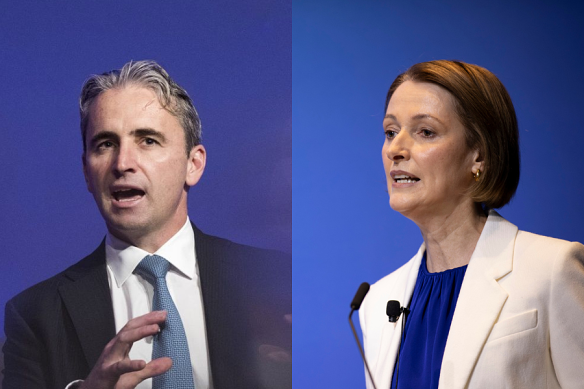CBA and Telstra join forces to bust scam calls
Australia’s biggest bank and telecommunications company have joined forces to create a scam detection and prevention tool they say could reduce how much customers lose by up to $20 million a year.
The “Scam Indicator”, which will be piloted over the next few months, is aimed at protecting Commonwealth Bank and Telstra customers from phone scams where criminals try to trick people into transferring them large amounts of money.
CBA chief Matt Comyn and Telstra boss Vicki Brady said they welcomed more partners in their new initiative.Credit:Brent Lewin and Arsineh Houspian
CBA boss Matt Comyn said while he was unable to reveal too many details about the program because that could aid the scammers, the initiative was designed to improve early detection and prevention of scams.
“We have been working with Telstra to produce a machine-learning scams detection model, the first in a number of exciting initiatives from this partnership,” he said.
“We acknowledge that there is more to do given the rising volume and fast changing nature of scams.”
The Scam Indicator, currently in its proof-of-concept stage, is designed to detect high-risk scam situations in real time, allowing CBA to call on Telstra to check if a customer is on a phone call. CBA can then contact the affected customer or put in additional checks, including delaying, blocking or interrupting transactions, as well as sending a notification into the customer’s banking app.
The initiative comes as financial losses from scams are expected to double to $4 billion this year, and companies and government look to crack down on the issue. So far this year, Australians have lost nearly $100 million according to Scamwatch.
While Telstra has a long-standing relationship with CBA, the telco’s chief executive Vicki Brady said collaboration with other companies was key in addressing the increasing sophistication of scam attacks.
“We have been in conversation with other banks in the sector as well,” she said. “It’s only when you deeply collaborate that you can really test and understand what works.”
Both companies said they welcomed more partners across the broader ecosystem.
‘We acknowledge that there is more to do given the rising volume and fast changing nature of scams.’
The pilot program will be rolled out in the middle of this year, with more banks expected to join the initiative in the latter part of 2023.
CBA’s Comyn said that in dollar terms, investment scams – where victims are given a fake investment proposition – caused the greatest drain to customers’ finances. That’s followed by romance scams, remote access scams – where people are encouraged to install software – and phishing, where scammers pretend to be from reputable companies to induce individuals to reveal personal information.
“SMS is often the way into phishing scams, and remote access scams are often conducted through phone calls,” he said.
Brady said Telstra had blocked more than 10 million phone calls and 23 million SMS messages a month through its existing “Cleaner Pipes” initiative, and more than 330 million emails – or about 40 per cent of all inbound emails – to its Bigpond customers every month.
The Scam Indicator is the latest in a series of moves from government and corporates to address the increasing prevalence of scams, including a proposed SMS registry and verification measures for bank transfers.
The Business Briefing newsletter delivers major stories, exclusive coverage and expert opinion. Sign up to get it every weekday morning.
Most Viewed in Business
From our partners
Source: Read Full Article



